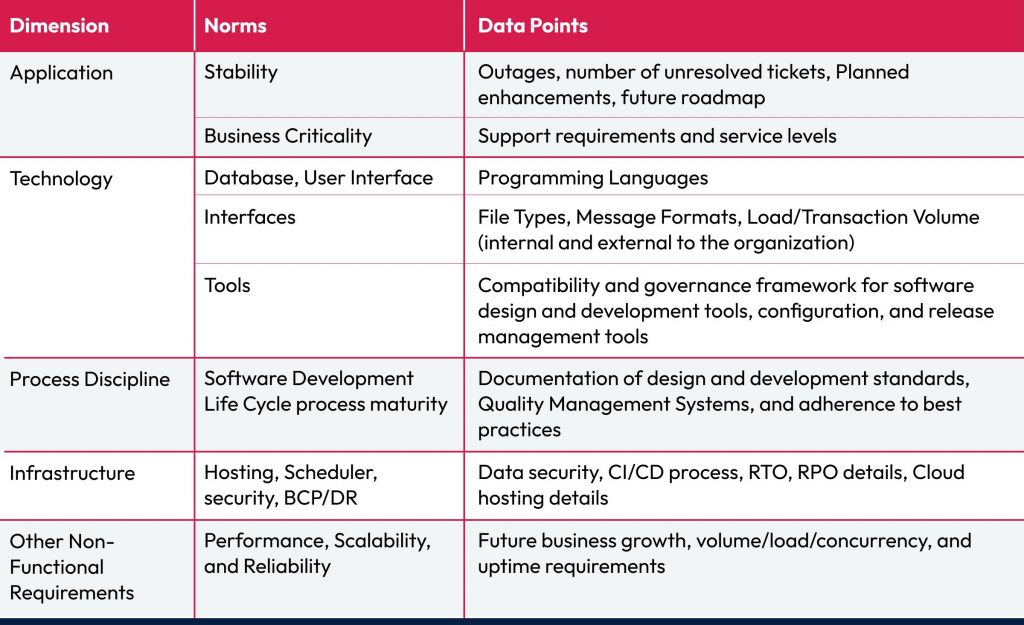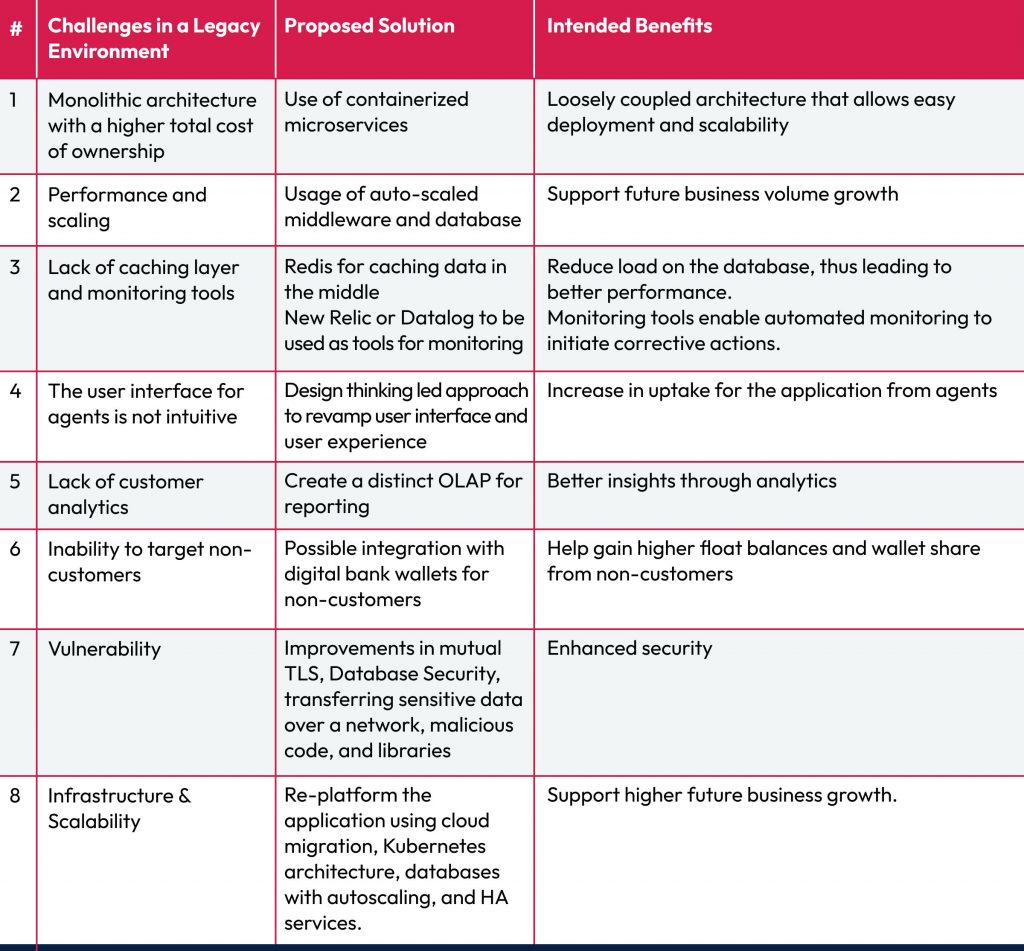Legacy modernization is the process of transforming outdated business technology systems, known as legacy systems, into modern infrastructure and functionalities. It is the process of updating or replacing outdated software using modern programming languages, software libraries, or protocols and giving a makeover for the digital age. This article outlines the blueprint for modernizing legacy systems and lists key benefits that accrue from this initiative.
Assessment Methodology for Legacy Modernization
The legacy modernization exercise commences with an assessment of the existing application landscape to determine the ability of the existing technology systems (application and infrastructure) to support evolving business needs. A detailed roadmap is drawn up subsequently to complete the exercise. The assessment involves gathering data points around different aspects of the technology landscape. This is supplemented with structured interviews with key stakeholders representing business and technology to understand current pain points and future requirements.
Quantitative Data Points
Quantitative data delves into various platform dimensions, including application stability, business criticality, technology stack, process discipline, infrastructure, and non-functional requirements. Specific data points might include outage frequency, unresolved ticket counts, planned enhancements, technology stack details, interface protocols, data volumes, compatibility of software development tools, adherence to best practices, hosting configurations, disaster recovery plans, and performance scalability metrics.

Qualitative Data Collection
Qualitative data gleaned through stakeholder interviews sheds light on future business goals, technology preferences, regulatory constraints, and pain points. This input enriches the quantitative analysis, painting a holistic picture of the current and future aspirations.
Analysis and Roadmap
Armed with this comprehensive data, we embark on the analysis phase. This involves meticulously examining software code, database structures, and the interplay between quantitative and qualitative inputs. The culmination of this analysis is a robust blueprint for the legacy transformation exercise.
The blueprint addresses critical challenges and proposes targeted solutions, each delivering distinct benefits. For instance, monolithic architectures plagued by high ownership costs can be transformed into loosely coupled microservices, enabling simpler deployments and improved scalability. Performance bottlenecks can be tackled by introducing auto-scaled middleware and databases, paving the way for future business growth. Similarly, implementing caching layers and monitoring tools can enhance performance and operational efficiency.

Benefits of Legacy Modernization
Some of the key benefits are listed below:
- Improved functionality and security: Modern technologies offer better performance, scalability, and security features compared to older systems.
- Reduced costs: Maintaining outdated systems can be expensive, while modernizing can lead to cost savings on maintenance, licensing, and energy consumption.
- Enhanced agility and flexibility: Modern systems are easier to adapt to changing business needs and integrate with new technologies.
- Better user experience: Modern interfaces are more user-friendly and accessible, leading to improved employee and customer satisfaction.
Conclusion
Legacy modernization holds lessons for the entire financial services industry. It demonstrates the power of technology to unlock economic potential, empower migrant workers, and strengthen local communities. By embracing innovation and adaptability, financial institutions can thrive in the competitive landscape and contribute to a more inclusive and equitable global economy. By partnering with a reliable and proven digital transformation partner, legacy modernization in one market can inspire and pave the way for similar advancements across the globe, ultimately benefiting communities and individuals.





